Principles of Effective Vocabulary Instruction
- Teach vocabulary directly and sequentially (within a knowledge rich curriculum)
- Activating prior knowledge and interest
- Knowledge ratings
- Wide reading
- Multiple exposures to the new word
- Pronouncing the word
- Break the word into sound units (onset-rime, syllables, phonemes)
- Identify key morphemes and root words
- Semantic mapping and graphic organisers
- Provide opportunities for deep processing
(Jitendra, Edwards, Sacks & Jacobsen, 2004,Taylor, Mraz, Nichols, Rickelman & Wood, 2009
What do you need to consider when you are selecting words to teach.
Tiered Vocabulary Instruction
A student’s vocabulary knowledge in the first grade can predict their reading achievement all the way through to their junior year in high school. -Dr. Isabel Beck

(Model based on the work of Beck, McKeown & Kucan, 2013)
The three-tiered model of vocabulary instruction is a model was created by Beck, McKeown & Kucan (2013) is a framework to classify words. Beck’s distinction among the tiers assists educators when making choices about the specific vocabulary that they need to teach.
Dr. Isabel Beck, Dr. Margaret McKeown, and Dr. Linda Kucan in the 2013 @nd Edition publication of their book titled Bringing Words to Life: Robust Vocabulary Instruction, described tiered vocabulary as an organizational framework for categorizing words which consists of three different word levels/ tiers, each tier having its own implications for instruction.
Tier 1 words: are high- frequency everyday words. These are words that students acquire through oral language experiences and most likely do not require explicit instructions e.g. walk, park, see, ball.
Tier 2 words: are academic words used across subjects/ domains such as science, and literature. They are high utility words that are frequently used in texts, but not in oral language e.g. include, contact, examine, explore, function
Tier 3 words: are content specific words used within domains. These words help us understand specific topics more deeply e.g. fusion, tundra, simile, monarchy
Beck, McKeown, and Kucan suggest that whilst there is no specific formula for placing words into the tiers for explicit instruction. Interestingly, words can fall into more than one tier depending upon its definition/s and use. When choosing words, teachers should consider the following:
- How useful is the word?
- Will they see the word often in texts?
- How does the word relate to other words or ideas in the curriculum?
- Does the word directly relate to a specific topic of study or subject?
- What does the word bring to a text or situation?
- What role does the word play in understanding the overall meaning?
While Tier 1 words are mostly learnt through oral language experiences, Tier 2 and Tier 3 words are most often learnt through explicit instruction and engagement with complex texts.
By focusing on explicitly teaching Tier 2 and Tier 3 words, teachers are able to supports students’ understanding of word meaning and as a result comprehend text.
Tier 2 words are particularly important because they have high use, They fall into such domains as science, social studies and literature and are used in multiple domains.

Students need to interact with a word approximately 12 times for it to stick and be stored in their long-term memory, more frequently for those students that have a reading deficit (McKeown et al, 1983).
Words therefore need to be unpacked and explored beyond word meaning and use. Teachers need to consider
For further information about Dr Isabel Beck and Dr Margaret McKeown work, click on the link and listen to this webinar. Ed Web.net (2017) Experts Isabel Beck & Margaret McKeown: Vocabulary & Comprehension
How many words?
Use a small selection of words from one text for the week. For older students they may be selected from the chapter that you are working in. Ehri (2014), suggests:
Years K-2 2 to 5 words per week
Years 3-4 7 to 8 words per week
Years 5-6 10 words maximum
Once students are reading independently, they are also feeding their vocabulary. Ehri, also suggests that students say unknown/ unfamiliar words out loud as they read, activating the phonological processor (2014).
Remember when planning explicit vocabulary instruction:
- Select important words to teach
- Define the words in child friendly language
- Model examples and non-examples
- Provide guided practice using newly acquired words
- Build relationships among words including gradients, synonyms and antonyms
- Develop multiple opportunities to use the word in a variety of contexts
Weely Instructional Cycle (example)

(Five from Five & The Academy for the Science of Instruction, 2025)
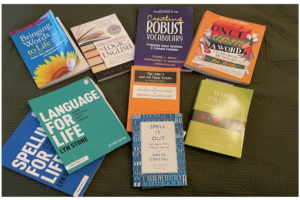
Resources
Vocabulary: Bring Words to Life (Reading Rockets) A teacher created vocabulary strategy based on the book ‘Bringing Words to Life’.
What is the Etymology of Vocabulary?
David Crystal, ‘Words, Words, Words’
‘Closing the Vocabulary Gap‘ by Alex Quigley PublishedMay 8, 2021
Listen to Decodables Reader’s Australia’s video of Effective Tiered Vocabulary Instruction and how this can be incorporated into reading lessons.
Examples of Vocabulary Instruction
For your reference I have attached a selection of videos of high-quality vocabulary instruction. I advise you to watch these, as they are experts in their field and exemplary instructors.
I have also included many links for further resources if you wish to dive down this rabbit hole!
Now watch Lyn use her 4 Step Process to explicitly teach a new word to a foundation class.
Lifelong Literacy Webinar – The 4 Step Process
Watch explicit instruction expert Anita Archer as she explores several research-informed strategies to use when teaching vocabulary.
Learning intention:
- understand how to apply the 3-tier model of vocabulary development.
- learn strategies for explicitly teaching vocabulary.
Explicit Vocabulary Instruction with Anita Archer https://youtu.be/C-dfYyCRJ5E
Watch Anita Archer teach explicitly teach vocabulary in an upper primary/ secondary classroom. Example Lesson
Dr. Anita Archer – Vocabulary Instruction https://youtu.be/DC0HNtvxuRg
Teaching Vocabulary (Basic Structure)
Step 1 Introduce each new word one at a time, say the word aloud and have students repeat the word.
Step 2 Give students the definition of the word and ask them to write that word in a sentence.
Step 3 Use graphic organizers to define new words.
Step 4 Reflect.
Step 5 Read the text you’ve chosen.
Step 6 Ask students to repeat the word after you’ve read it in the text.
Step 7 Use a quick, fun activity to reinforce each new word’s meaning.
Step 8 Play word games.
Explicit Vocabulary Routine Video
https://youtu.be/kBqnCHzfkU8?si=d5nxDcEva2WXIPT5
SEEC Vocabulary Instruction (Alex Quigley)
Three Pillars of Vocabulary Teaching May 2021 Alex Quigley
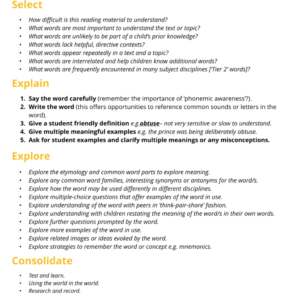
(SEEC Model Created by Alex Quigly (2021) influenced by the work of Robert Marzano, Isabel Beck and Colleagues)
5 Step Routine for Teaching Vocabulary
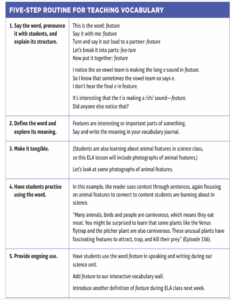
(Adapted from Anita Archer)
Word Analysis to Expand Vocabulary Development | Reading Rockets
Previewing Vocabulary Before Reading | Reading Rockets
Morphology
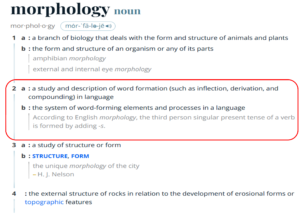

Words are made up of morphemes. Morphemes are the smallest chunks of basic meaning in a word. Students can be taught to analyse the structure of words using these meaningful word parts – morphology. Some morphemes can stand alone, these are called free morphemes.
If you would like to learn more about Morphology than there is no better person to learn from then the wonderful William Van Cleave. Whilst William has sadly passed Pattan Literacy and Dr Pam Kastner has generously made this recording of his presentation for the 2020 Pattan Literacy Symposium available.
(Pattan Literacy Symposium https://youtu.be/aUjfj3WHU4Q?si=BR8pRDJtjPr4sgXH )
Root Words, Suffixes, and Prefixes | Reading Rockets

Morphology Instruction Basics
Useful in teaching word meanings.
- Teach students to break the word apart in meaning units – roots and affixes
- Find the ‘Base Word’
- Identify the Affix/s – A prefix or suffix is introduced given the most common meaning
- Ask students to rebuild the word
- Identify other words that can be built from the base word
- Create a Word Matrix
What Should Morphology Instruction Look Like? | Reading Rockets
For a detailed explanation of what morphology is and how to include this instruction in your classroom, Read:
How to Teach Morphology in Literacy (with Examples)
Using Morphology to Teach Vocabulary – Keys to Literacy
Here are three morphology lessons for you reference
Read: Timothy Shanahan’s Blog on
What Should Morphology Instruction Look Like? | Reading Rockets
Watch this Reading Rockets video of how this Year 2 Teacher includes morphology lessons in his classroom. https://youtu.be/720bQKthBEI
Watch this Reading Rockets video of how this Year 1 Teacher investigate grapheme-phoneme connections with the context of morphological word.
Watch this Reading Rockets video of a Kindergarten lesson introducing the morphological unit plural s https://youtu.be/VW8in2AIPy8
Here are some free morphology resources
5 Digital Morphology Tools – The Literacy Nest
Word Works Home
VOCABULARY Definition & Meaning – Merriam-Webster
Using Morphology to Teach Vocabulary – Keys to LiteracyWhat Should Morphology Instruction Look Like? | Reading Rockets
Etymology
English spelling is unusual because our language is a rich verbal tapestry woven together from the tongues of the Greeks, the Latins, the Angles, the Klaxtons, the Celtics, the 76’ers, and many other ancient peoples, all of whom had severe drinking problems.” Dave Barry, humorist
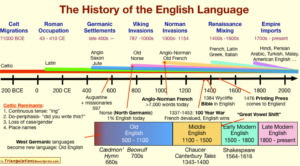
Source : The History Of The English Language In One Chart
https://gizmodo.com/this-animated-history-of-the-english-language-is-wonder-1464423756
English is a language layered with words from many different spellings derived from several languages that have over hundreds of years, amalgamated to what we recognise today. This process continues today, our language is constantly evolving.
Children like learning about the etymology of words. Exploring the history of a word and the story of why it does not follow the regular spelling patterns, discovering other words that are related or have common attributes, add another layer of word knowledge and clarity that students can apply to reading and writing.
The Origins of the English Language – English (General Studies) – NDLA
Definition
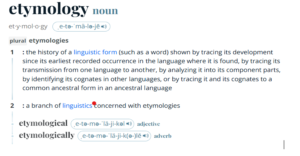 Source: ETYMOLOGY Definition & Meaning – Merriam-Webster
Source: ETYMOLOGY Definition & Meaning – Merriam-Webster
Links to further resources
Etymonline – Online Etymology Dictionary
Historical Layers of English | Reading Rockets
WVC ED | William Van Cleave Products
Root Words, Suffixes, and Prefixes | Reading Rockets
7 Reasons Etymology is Important for Teachers – Vocabulary Luau
Spelling does Make Sense! @WordWorksKInsgston
Moats, L, & Tolman, C (2009). Excerpted from Language Essentials for Teachers of Reading and Spelling (LETRS): Spellography for Teachers: How English Spelling Works (Module 3). Boston: Sopris West.
